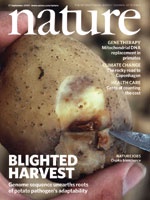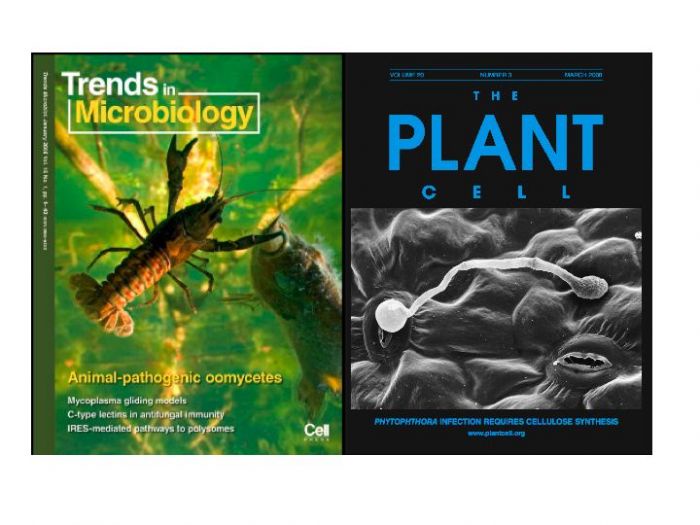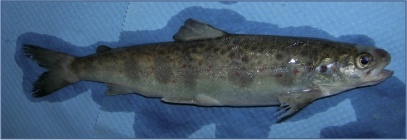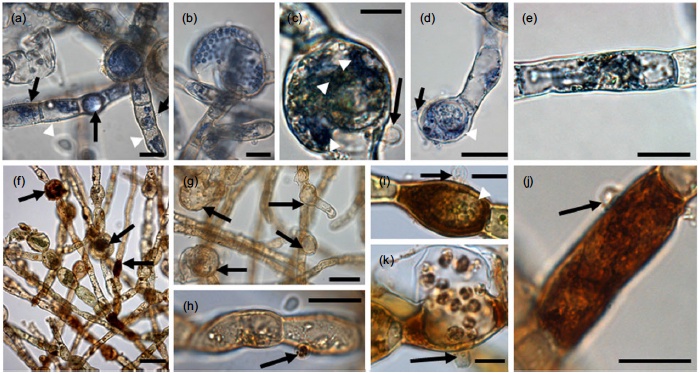
MSc (Wageningen, The Netherlands, 1993) PhD (Wageningen, The Netherlands, 2000)
Chair in Mycology
- About
-
- Email Address
- p.vanwest@abdn.ac.uk
- Telephone Number
- +44 (0)1224 437327
- Office Address
Office 2:33, Lab 2:39
Aberdeen Oomycete Laboratory
College of Life Sciences and Medicine
Institute of Medical Sciences
Foresterhill
Aberdeen
AB25 2ZD- School/Department
- School of Medicine, Medical Sciences and Nutrition
Biography
Prof. Dr. Ir. Pieter van West is a past Royal Society University Research Fellow. He is Director of the International Centre for Aquaculture Research and Development (ICARD) at the University of Aberdeen, Board member of the Sustainable Aquaculture Innovation Centre (SAIC), Fellow of the Royal Society of Edinburgh and he was President of the British Mycological Society 2017-2018) .
His current research programme focuses on oomycete biology. Several economically and environmentally important oomycetes, or watermoulds, are studied at most disciplinary levels (taxonomy, ecology, epidemiology, biochemistry and cellular and molecular biology and especially host-microbe interactions). He is particularly interested in developing novel methods to control oomycete pathogens.
The animal pathogenic oomycetes under investigation are Saprolegnia parasitica, Saprolegnia australis, Saprolegnia diclina, Aphanomyces spp. and Halioticida spp.
The plant pathogenic species include mainly Phytophthora infestans and several Pythium spp. and the algal pathogenic species include Eurychasma dicksonii, Olpidiopsis spp., Anisolpidium spp. and Maulinia spp.
Memberships and Affiliations
- Internal Memberships
-
Director of the International Centre for Aquaculture Research and Development (ICARD)
- External Memberships
-
Fellow of the Royal Society of Edinburgh
Board member of the Sustainable Aquaculture Innovation Centre (SAIC)
Past President of the British Mycological Society
Editorial Board member of Fungal Biology
Editorial Board member of Fungal Biology Reviews
- Research
-
Research Overview
Fundamental molecular processes in Oomycete pathogens
The group of oomycete pathogens cause destructive diseases of thousands of (commercially important) plant species and fish. These so-called watermoulds have many fungus-like characteristics, but are not true-fungi. In fact, they are closely related to kelp and diatoms.
One particular oomycete, Phytophthora infestans, the causal agent of potato late blight, generates global yield losses estimated to exceed over £3 billion annually, making it one of the most important biotic constraints to global food production. It is probably the most destructive plant pathogen in human history, as it caused tremendous human suffering in the mid 1840's due to failed potato crops in Ireland and the UK.
One of the most destructive oomycete pathogens on fish is Saprolegnia parasitica. It is endemic to all fresh water habitats around the world and is partly responsible for the decline of natural populations of salmonids and other fresh water fish. Today, losses in the salmon aquaculture business in Scotland alone are estimated at several millions of pounds annually.

Despite their economic importance, little is known about the molecular mechanisms accounting for the success of Oomycetes as plant or fish pathogens, or the fundamental molecular processes underlying their development. My research program aspires to identify molecular characteristics that are essential for the development and pathogenesis of Phytophthora, Pythium and Saprolegnia species.
Work mainly focuses on the isolation and functional characterisation of genes encoding recognition molecules and stage-specific proteins to enable
- understanding and unravelling fundamental molecular processes in Oomycetes
- the detection of molecular targets for novel control strategies, possibly directed against a variety of Oomycete pathogens.

Current Research
1 Identification and functional characterisation of zoospore specific proteins from oomycetes via genomic, transcriptomic and proteomics approaches (Figure 1).

Figure 1. Zoospores are released from a sporangium of Saprolegnia parasitica (taken from van West, 2006)
2 Identification and functional characterisation of proteins from Saprolegnia parastica, a fish pathogen of salmonids and other fresh water fish (Figure 2), that are essential for development and pathogenicity.

Figure 2. Saprolegnia infection on pre-smolt salmon.
3 Investigating the mechanism of Phytophthora and Saprolegnia protein translocation into the host cells (Figure 3).

Figure 3 Oomycete effector translocation (Image taken from Wawra et al., 2012 Current Opinion in Microbiology doi:10.1016/j.mib.2012.10.008).
4 Research into oomycete-insect interactions

Figure 4 Saprolegnia infections of waterborne insects (Image taken from Sarowar et al. 2013 Fungal Biology 117: 752-763).
5 Research into oomycete-algae interactions.

Figure 5 Eurychasma infections in Ectocarpus (Image taken from Strittmatter et al., 2015, Plant Cell & Environment doi: 10.1111/pce.12533).
6 Discovering and describing novel oomycete species

Figure 6 Oospores of Pythium polare, a pathogen of moss from the arctic and antarctic regions (Image taken from Tojo et al. 2012, Fungal Biology doi:10.1016/j.funbio.2012.04.005).
- Teaching
-
Teaching Responsibilities
Eukaryotic Microbiology lectures in course BI25M5 (Microbes, Infection & Immunity)
Molecular Plant Pathology lectures in course AG3816 (Biology and Ecology of Plant Disease)
- Publications
-
Page 7 of 13 Results 61 to 70 of 129
Animal pathogenic Oomycetes
Fungal Biology, vol. 118, no. 7, pp. 525-526Contributions to Journals: Articles- [ONLINE] DOI: https://doi.org/10.1016/j.funbio.2014.05.004
- [ONLINE] View publication in Scopus
A putative serine protease, SpSsp1, from Saprolegnia parasitica is recognised by sera of rainbow trout, Oncorhynchus mykiss
Fungal Biology, vol. 118, no. 7, pp. 630-639Contributions to Journals: ArticlesReprint of: Saprolegnia strains isolated from river insects and amphipods are broad spectrum pathogens
Fungal Biology, vol. 118, no. 7, pp. 579-590Contributions to Journals: Articles- [ONLINE] DOI: https://doi.org/10.1016/j.funbio.2014.05.005
- [ONLINE] View publication in Scopus
Auto-aggregation in zoospores of Phytophthora infestans: the cooperative roles of bioconvection and chemotaxis
Journal of the Royal Society Interface, vol. 11, no. 94, 20140017Contributions to Journals: Articles- [ONLINE] DOI: https://doi.org/10.1098/rsif.2014.0017
Global distribution of two fungal pathogens threatening endangered sea turtles
PloS ONE, vol. 9, no. 1, e85853Contributions to Journals: ArticlesParental transfer of the antimicrobial protein LBP/BPI protects Biomphalaria glabrata eggs against oomycete infections
PLoS Pathogens, vol. 9, no. 12, e1003792Contributions to Journals: ArticlesManaging scientific diving operations in a remote location: the Canadian high Arctic
Diving and Hyperbaric Medicine, vol. 43, no. 4, pp. 239-243Contributions to Journals: ArticlesSaprolegnia strains isolated from river insects and amphipods are broad spectrum pathogens
Fungal Biology, vol. 117, no. 11-12, pp. 752-763Contributions to Journals: Articles- [ONLINE] DOI: https://doi.org/10.1016/j.funbio.2013.09.002
The impact of the water moulds Saprolegnia diclina and Saprolegnia parasitica on natural ecosystems and the aquaculture industry
Fungal Biology Reviews, vol. 27, no. 2, pp. 33-42Contributions to Journals: Literature Reviews- [ONLINE] DOI: https://doi.org/10.1016/j.fbr.2013.05.001
Distinctive expansion of potential virulence genes in the genome of the oomycete fish pathogen Saprolegnia parasitica
PLoS Genetics, vol. 9, no. 6, e1003272Contributions to Journals: Articles
